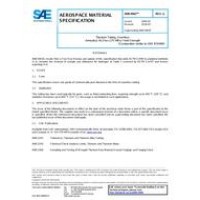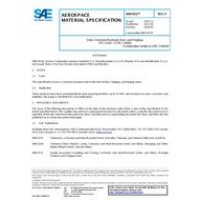SAE J2517_201608
- Hybrid III Family Chest Potentiometer Calibration Procedure
- standard by SAE International, 08/03/2016
- Category: SAE
$81.00
$41.00
This procedure establishes a recommended practice for establishing the sensitivity of the chest displacement potentiometer assembly used in the Hybrid III family of Anthropomorphic Test Devices (ATDs, or crash dummies). This potentiometer assembly is used in the Hybrid III family to measure the linear displacement of the sternum relative to the spine (referred to as chest compression). An inherent nonlinearity exists in this measurement because a rotary potentiometer is being used to measure a generally linear displacement. As the chest cavity is compressed the potentiometer rotates, however the relationship between the compression and the potentiometer rotation (and voltage output) is nonlinear.
Crash testing facilities have in the past used a variety of techniques to calibrate the chest potentiometer, that is to establish a sensitivity value (mm/ (volt/volt) or mm/ (mvolt/volt)). These sensitivity values are used to convert recorded voltage measurements to engineering units, in this case chest compression in mm. Some of these techniques intended to correct for the nonlinearity and others did not. Of those that did correct for the nonlinearity, there was a variation in techniques used. This variation in calibration procedures was in part identified by the SAE Dummy Testing Equipment Committee (DTEC), and led to overall variability in chest compression measurements between laboratories.
The intent of this recommended practice is to minimize the variations in chest deflection measurements between crash testing laboratories. Before this procedure was written, a round robin showed variations for the Small Female of 10% among 8 labs for the chest pot sensitivity value. A follow-up round robin of this procedure showed a worst case variation of 2.7% among 10 labs, with a standard deviation of 0.9%. The initial version of SAE J2517 released in May 2000 attempted to fix this problem by recommending a two-point calibration which was not intended to correct for the nonlinearity (which, for example, is as large as 3% for the Small Female but is small near the peak). It also did not require the measurement of a starting position of the potentiometer before each crash test, thus it did not correct for the difference in starting chest geometry between a subject dummy and its design intent. It was intended to be a simple and reproducible calibration procedure which crash test facilities could easily adopt with little or no modifications to their facilities. In practice, most laboratories did not adopt the procedure since it did not correct for the nonlinearities.
Recent attempts to reduce dummy-to-dummy and lab-to-lab variations at lower deflection levels (around 25 mm) have renewed interest in adopting a calibration procedure to correct for the nonlinearity of the measurement system. This current revision of this procedure uses a multipoint calibration with a third order regression to correct for the nonlinearities of the system with a standardized method. It requires changes in the calibration method of the transducer, the data collection procedures when used in a dummy, and the processing procedures after test data is collected. Following this standardized methodology will minimize linearity errors as well as lab-to-lab variations.
 PDF
PDF
All of our standards document are available in PDF (Portable Document Format), an electronic, downloadable format.You will be able to download the file in your account downloads.
 Multi-User Access
Multi-User Access
After purchasing, you have the ability to assign each license to a specific user.
 Printable
Printable
At any time, you are permitted to make printed copies for your and your members' reference use.





